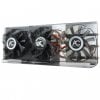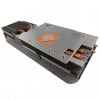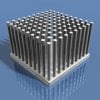Designing & building a led grow panel ,was and is one of the most intriguing ,
fascinating and joyful experiences I've ever had ..(at least for me ,personally )
And keep having ....
But it is also one of the most multi-aspect and difficult tasks ever taken ....
(at least by me ...Oh-ohh ..My EGO speaks ,once more ? )
Even when , I had massive help and guidance by the best ..( Search for " Guod " at ..Cannapedia ... ) ...
Still ..
I F@(kin' -Absolutely LOVE IT !!!
To the point ....
Wide angle led lens allow for more "spaced apart" led arrangement ...( because of better light ' blending ' ) ...
'Cause of that ,cooling ,somewhat ,becomes easier ... (no hot spots ,no need for massive cooling of small heated/heating area,as with small mcpcbs -packed leds )
So ,passive cooling with the right heatsink becomes more feasible ....
(See Astir panels .... Same heatsink used for GD-SDS ,but PASSIVE ,cooling only 24 leds at ~320mA_ 120°-130° half angle )
While using narrow angle lens ...
1) Either panel distance from plants has to increase,with leds kept at a certain (minimum ) distance ,
with each other on to the heatsink _and passive cooling used ...
( I.e. like with led street lighting fixtures -luminaires )
Or ..
2) Leds have to be closely packed / arranged on the mc-pcb / heatsink ....
...
Passive cooling is out of question then ....*
....
!
P.S. / Edit : Doubting my shelf ,now ....
My Alter-Ego ,taking over ....
*
-Yeah ?
If that's true ,Mr I-Know-Everything ....
What about Osram's Prevaled spots then,dude ?
[video=youtube;LJN-CiSJHrw]http://www.youtube.com/watch?v=LJN-CiSJHrw[/video]
......
?
Anyone ?






















